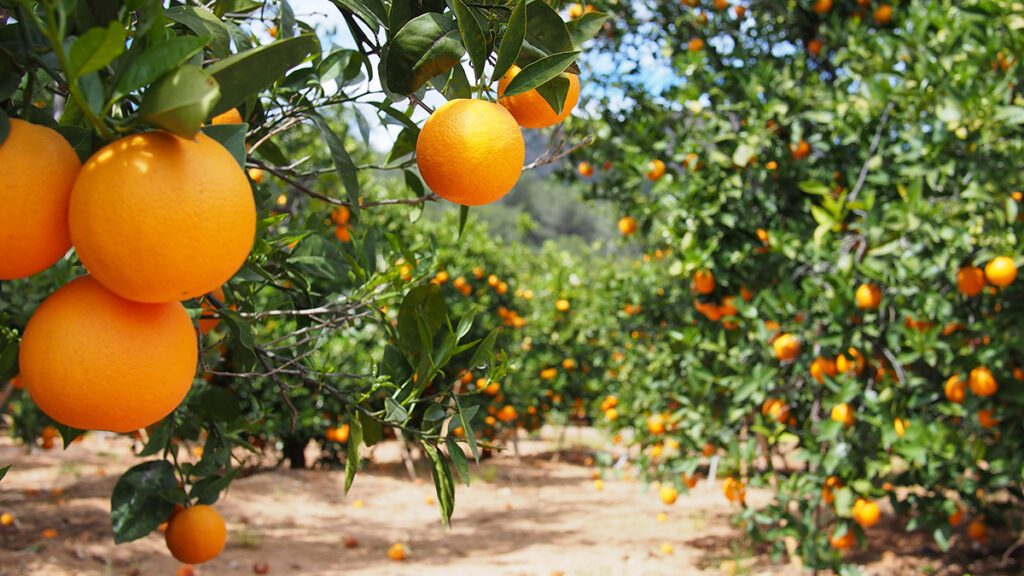Season Ends on Satisfactory Note for Florida Growers
By TERESA SCHIFFER
Summer is here and the citrus season is just wrapping up in Florida. All things considered, most growers and experts are satisfied with this season’s yield. Florida’s famous oranges are harvested from October through June, grapefruit gets shipped between September and June, and tangerines, tangelos, and temple oranges hit the markets from October to March. There were 67.65 million boxes of Florida oranges produced and marketed this year, which is down from 71 million last year, but still a very respectable take.
We talked to Vic Story of the Story Companies, a local conglomerate that manages, harvests, and markets over 7,000 acres’ worth of fruit in Central and South Florida, to get some insight on this year’s citrus harvest. As a family of grove owners and caretakers since 1945, the Storys have seen their fair share of harvests and know the ups and downs of the industry.
“This year’s citrus harvest,” Story tells us, “for us personally, it was pretty good. The earlies were up from the year before, and Valencias were mixed. Some were up and some were down.” The Storys primarily grow Valencia oranges, with a small block of grapefruit for a particular client.
There was a pretty heavy drop on Valencias, as an unexpectedly large amount of fruit fell from the trees before growers had a chance to harvest it. The drop may have been caused by unusually hot, dry weather during the spring. So overall, the Valencia harvest was somewhat lower than projected for this year, but other types of oranges harvested early in the season were up a bit.
As the coronavirus raged throughout the world this spring, Story reports that their citrus harvest was unaffected. They took safety precautions to protect their workers, such as limiting the trucks to the same two individuals only, providing masks for workers, and eliminating their morning socialization time before getting down to business. Fortunately, none of the Storys’ employees have fallen ill.
Concerns over health and immunity have resulted in an increased demand for orange juice, as the popular beverage has long been associated with immune system benefits due to its high vitamin C content. Andrew Meadows, director of communications for Florida Citrus Mutual, says, “It is heartening for us to know that people still see orange juice as a significant source of vitamin C that will boost the immune system, and that is what people are looking for right now.”
In addition to its link to a robust immune system, vitamin C in oranges has also been associated with promoting a healthy production of collagen, which improves skin health and wound healing, reducing inflammation, increased absorption of iron to enhance oxygen absorption and combat fatigue, and boosting the body’s ability to convert fat into fuel, both during exercise and at rest.
In addition to vitamin C, oranges are also an excellent source of potassium and fiber, which can reduce an individual’s risk of developing heart disease or diabetes. Even the peel has health benefits, as research has shown that flavonoids in the zest can help inhibit the growth of cancer cells and protect against some neurodegenerative diseases, such as Alzheimer’s.
Citrus greening has been a serious problem for Florida’s growers since 2005. Fortunately, time and research has taught growers how to best mitigate the disease through nutrient control and irrigation techniques. There will probably never be a “magic bullet” to completely cure or prevent greening, but by increasing the amount of minor nutrients the trees receive and decreasing the amount of water, growers like Story are finding that they can improve the lifespan and productivity of their trees through cultural practices.
High-density planting is still popular, though many growers have backed off from the very high-density groves. Two-hundred twenty to 250 trees per acre, maybe as many as 300, depending on the tree variety and rootstock, seems to be the most successful density.
Prices have been decent for citrus after a rocky start. Many growers, especially those without contract buyers, were taking as low as $1 per pound at the beginning of the season. Valencias started in the spring at about $1.20 per pound. By July, COVID-19 had caused an increase in demand for orange juice, which brought the price of Valencias up to about $2 per pound. This is still lower than what they have been fetching the last few years, but a respectable price nonetheless. Good prices combined with a healthy inventory this year has growers sitting in a good position moving forward.
As Vic Story’s father, Victor Story, Sr., liked to say in his lifetime, growing citrus is an honorable way to make a living. Florida’s citrus growers, like many other farmers, are proud to provide a product that is healthy and wholesome for people.
So what does the future hold for Florida citrus growers? Story gives his assessment, “There are growers that have learned how to manage the greening disease and are committed to staying in business, and there are growers that are not. I think we will continue to see a crop somewhere in the 60s [millions of boxes], absent any kind of weather event, for a few years.”

